Oppiliappan Temple is among the most sacred temples to Lord Vishnu, located near Kumbakonam in Tamil Nadu. Lord Oppiliappan, or Uppiliappan, is of great importance to Vaishnavites; as one of the 108 Divya Desams, it is one of the most sacred pilgrimage places among Vishnu devotees. The present structure reflects the richness and strong cultural and spiritual heritage of Tamil Nadu over several centuries. This sacred sanctum houses the majestic idol of Lord Oppiliappan along with Bhoomi Devi, and this spiritual atmosphere of the temple attracts devotees and tourists alike.
Quick Details About Oppiliappan Temple
Location: Kumbakonam, Tamil Nadu
Oppilliappan Temple Address: Thirunageswaram, Kumbakonam, Tamil Nadu 612204
Oppilliappan Temple Timings: 6 AM – 1 PM; 4 PM – 9 PM
Entry Fee: None
How To reach: By bus, taxi, and autorickshaw.
Nearest Airport: Tiruchirappalli International Airport (106 km)
Nearest Railway Station: Kumbakonam Railway Station (6 km)
Best Time To Visit: October to February
Location
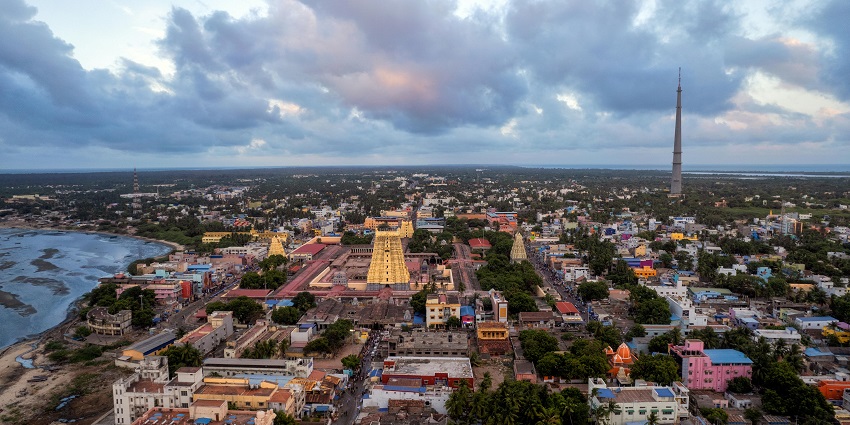
Photo: Vikash Singh / Pexels / Image For Representation Only
Oppiliappan Temple is one of those situated in the town of Thirunageswaram, located around Kumbakonam in Tamil Nadu. The road to the temple is Oppiliyappan Koli N st, which is connected to Pillayar Sovil Street, Nadupattarai St., and Thirunageswaram to Nachiyar Kovil main road. The nearby landmarks are V.G. Darshan Homes, VG Divine Mess hi-class pure veg, PKR Catering Service, Dhana Cabs, and S.V.K Street. This temple is located in a silent atmosphere amidst dense greenery, which helps pilgrims and tourists find abode during their visit.
Suggested Read: Places To Visit Near Ooty
How To Reach Oppiliappan Temple
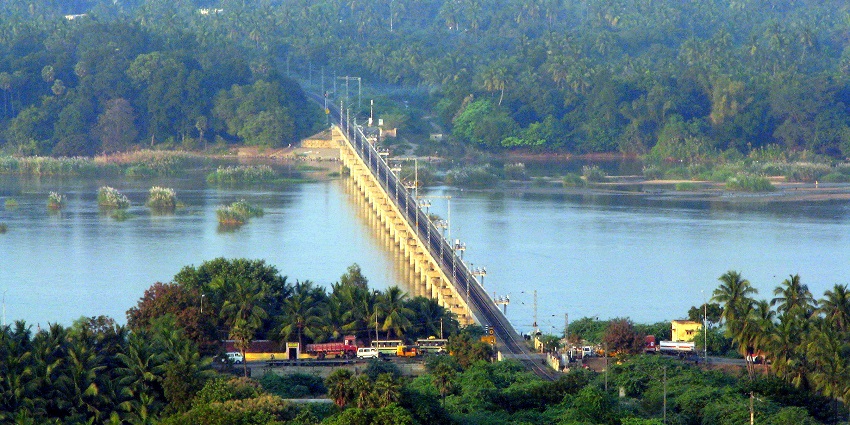
Photo: Ramanathan Kathiresan / Wikimedia Commons
Kumbakonam is very well connected by road to all major cities in TamilNadu. Buses, taxis, and auto rickshaws are available from Kumbakonam.
By Air: The nearest airport is Tiruchirappalli International Airport, 106 km from the temple. From Tiruchirappalli airport, a taxi or a bus can be taken to Kumbakonam and then to Thirunageswaram.
By Railway: The Kumbakonam Railway Station is the nearest to the temple, which is located 7 km from here. One may hire an auto rickshaw or taxi.
By Road: The temple is a 15-minute drive from the town. The nearest bus station is Kumbakonam bus stand, from where the bus takes you directly to the Oppiliappan temple address.
Things To Do
1. Attend Regular Traditions And Celebrations
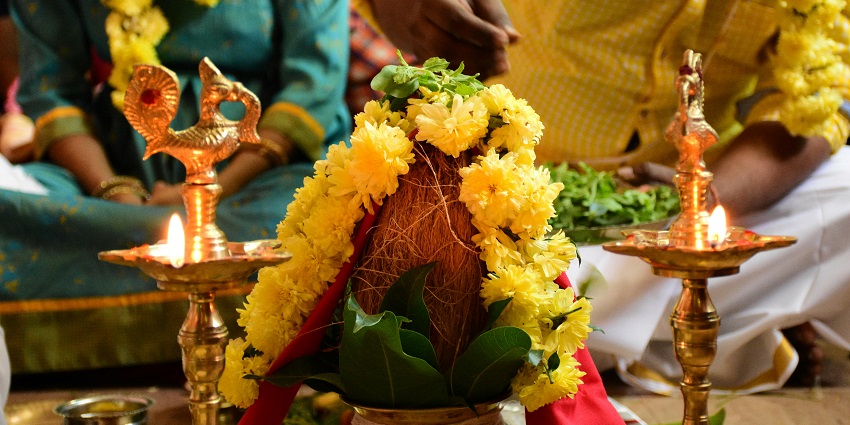
Photo: Suren Ram / Pexels / Image For Representation Only
Oppiliappan Temple is one of the great daily rituals and colourful festivals. It so happens to be one of those places where the early morning Suprabhatam, the melodious hymn sung to wake up the deity, can be directly experienced. The Brahmotsavam and Panguni Uthiram are the most common festivals that are conducted in the temple. Salt-free food is another unique feature of its tradition, and prasadam is served without using salt to the devotees. Festivals here become a beautiful mix of devotion and cultural vibrance that manages to pull pilgrims from all over India.
Suggested Read: Varahi Amman Temples In Coimbatore
2. Study The Architecture
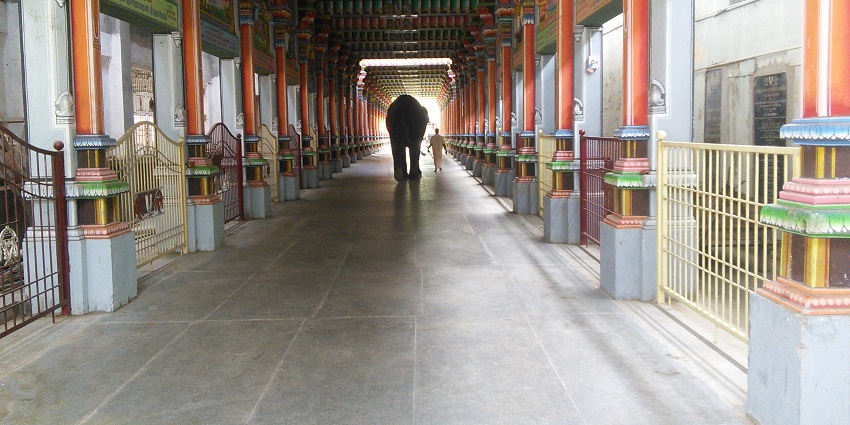
Photo: Arunasank / Wikimedia Commons
The Oppiliappan Temple is one of the most marvellous examples of Dravidian architecture. The gopuram, the gateway of the temple, is lavishly carved with a multitude of deities, mythological figures, and heavenly beings. Bhoomidevi adorns him on either side. The gold vimana above the sanctum makes the temple majestic. The sanctum sanctorum contains the standing Lord Oppiliappan. Take a round of the temple and marvel at the pillars carved well and the ornate decorations of mandapams.
Places To Visit Around Oppiliappan Temple
After visiting the temple, you can explore the places nearby which have unique, exquisite temples.
1. Sarangapani Temple
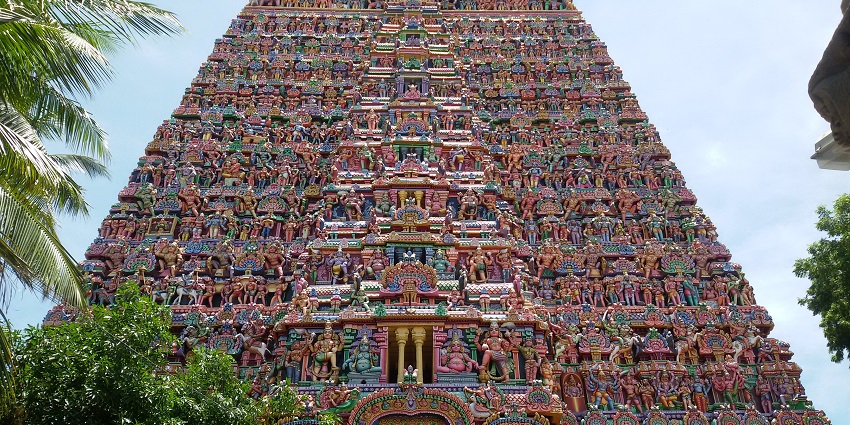
Photo: Prabhachatterji / Wikimedia Commons
Another important Divya Desam dedicated to Lord Vishnu is the Sarangapani Temple, which is located in Kumbakonam. One of the reasons for the temple’s fame is its outstanding gopuram, which narrates the wonder of erect Dravidian architecture, and the chariot-shaped sanctum makes it one of the fabulous structures in the region. The idol of Lord Vishnu here is held with a bow, and the deity is called Sarangapani, meaning “one who carries the bow.” The present temple, built in the style of Vijayanagara, has exquisite stone carvings, sculptures, and pillar carvings.
Timings: 6 AM – 12 PM; 4 PM – 9 PM
Location: 8 km from Oppiliappan Temple
Suggested Read: Pithru Tharpanam Temples In Tamil Nadu
2. Adi Kumbeswarar Temple
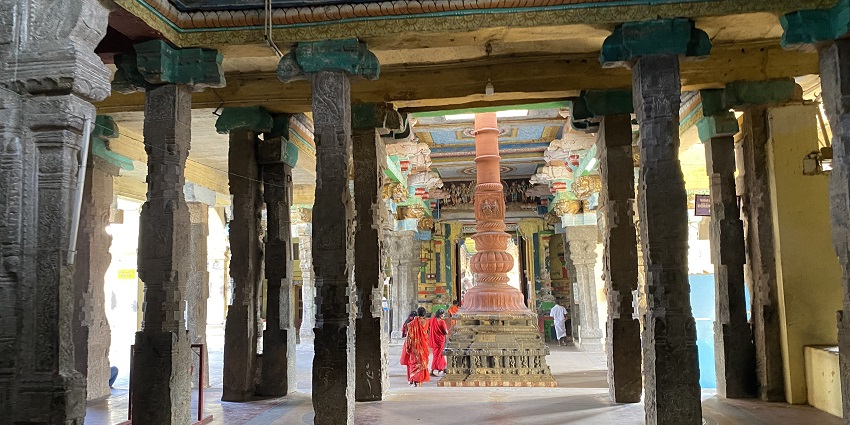
Photo: Vinayaraj / Wikimedia Commons
Located at the heart of Kumbakonam, the Adi Kumbeswarar Temple is also the oldest temple in the country and one of the most venerated. This wonderful temple dedicated to Lord Shiva precedes not only the very bigness and complexity of its structure but also its actual religious importance. It also houses a holy tank, which is said to remove all sins if one bathes in it. Cultural and spiritual enthusiasts who love the richest Tamil Nadu culture must visit Adi Kumbeswarar Temple during the Mahamaham festival. Here, people can experience the hubbub of rituals and celebrations within the temple.
Timings: 6 AM – 12 PM; 4 PM – 9 PM
Location: 8 km from Oppiliappan Temple
3. Ramaswamy Temple

Photo: PRAKASAM R / Pexels / Image For Representation Only
The Ramaswamy Temple in Kumbakonam is for Lord Ram and is well known for its very beautiful sculpture and artistry portraying the great tale of the epic Ramayana. Intricate carvings on the temple wall depict the main events of the Ramayana, which is a visual treat for mythology and art enthusiasts. The major deity is accompanied by Sita, the faithful brother Lakshmana, and the devoted disciple Hanuman, thus forming a divine tableau that attracts thousands of devotees. The architecture of the temple is an excellent example of traditional Tamil temple design, with towering gopuram, elaborate carvings, and detailed artworks bringing stories of Ramayana to life.
Timings: 6 AM – 12 PM and 4 PM – 8 PM
Location: 7 km from Oppiliappan Temple
Suggested Read: Places To Visit In Chennai At Night
4. Mahamaham Tank
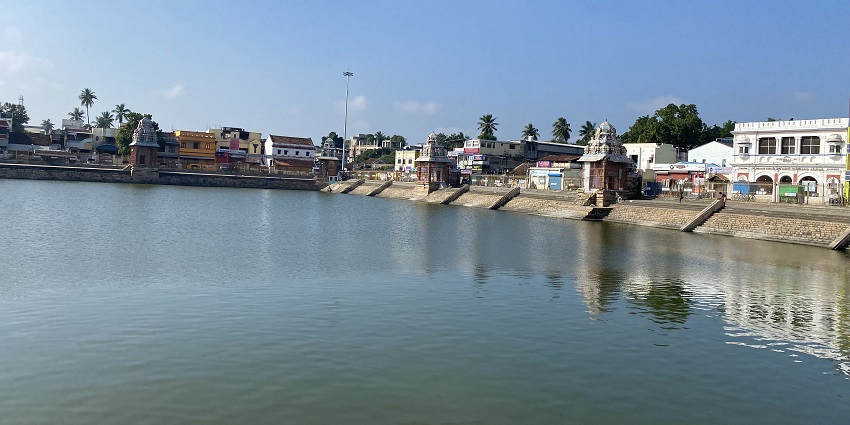
Photo: Vinayaraj / Wikimedia Commons
Mahamaham Tank is one of the sacred water bodies in Tamil Nadu, located at Kumbakonam. Mahamaham Tank holds special significance when the Mahamaham festival takes place, which occurs once every 12 years. Millions of followers are called during the festival to bathe in this holy tank, which is said to be a purging spiritual experience. Besides the presence of 16 shrines around, the tank adds even more religious significance to the site, which is known for its healing properties. Mahamaham Tank is revered for people who are taking pilgrimages and searching for peace in their respective spiritual journeys.
Timings: Open all day
Location: 7 km from Oppiliappan Temple
5. Nageswaran Temple
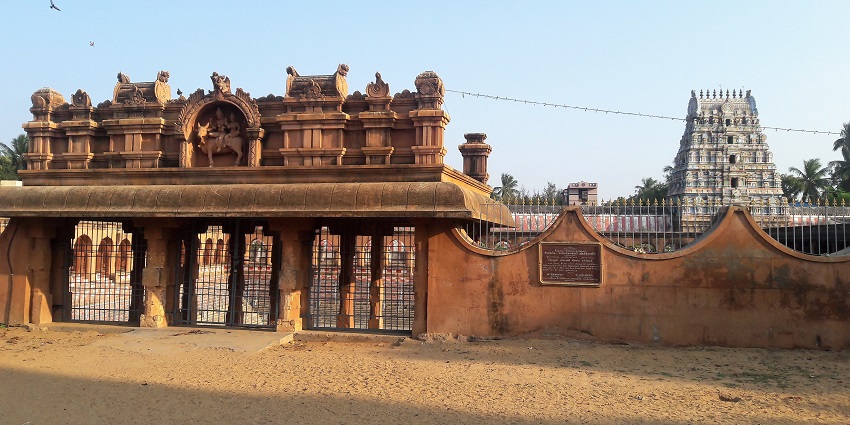
Photo: Ssriram mt / Wikimedia Commons
Nageswaran Temple is dedicated to Lord Shiva and is considered a masterpiece in the architecture of the Chola dynasty. The temple admits sunlight to the deity on certain days of the year. A perfect example of the ingenuity of its architects. Along with this phenomenon, the rich carvings and beautiful sculptures of this temple attract a fair number of visitors who have an interest in ancient Indian architecture and designs. Sacred and spiritual values are attached, and further architectural grandeur attracts not just devotees but also tourists towards this temple.
Timings: 6 AM – 12 Noon; 4 PM – 8 PM
Location: 7 km from Oppiliappan Temple
Suggested Read: Ancient Temples In Chennai
Where To Stay

Photo: Donald Tong / Pexels / Image For Representation Only
When visiting the Oppiliappan Temple, you can find a variety of accommodation options that range from budget to mid-range. Situated about 6 km from Kumbakonam, there are reasonably priced stays, such as Hotel Raya’s Grand, which is known for its comfort and proximity to important temples. Vinayaga by Poppys Kumbakonam is also well-liked and offers clean rooms and basic amenities. Indeco Hotels Swamimalai provides a unique stay experience with its traditional Tamil architecture. Additionally, temple-run choultries (guest houses) offer simple accommodation at economical prices that suit pilgrims who prefer a straightforward stay located close to the temple.
Where To Eat
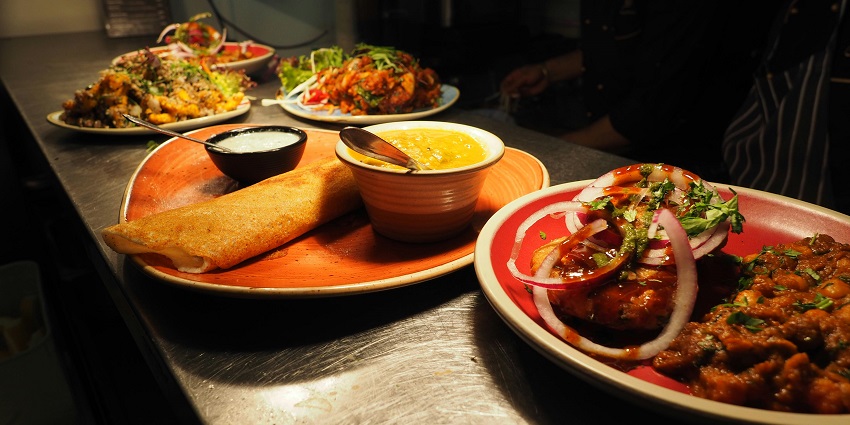
Photo: Chan Walrus / Pexels / Image For Representation Only
Oppiliappan Temple offers a dining experience with an authentic taste of South Indian vegetarian fare, with popular restaurants in the nearby town of Kumbakonam serving traditional meals on banana leaves. Sri Mangalambiga Vilas is a favourite spot known for its wide variety of traditional dishes, including sambar rice, vatha kuzhambu, and thayir sadam (curd rice). The Venkatramana Hotel is also well-liked for its tasty South Indian meals. If you’re looking for a quick snack, there are small eateries, and street vendors abound the temple, where you can pick up tiffin items such as idli, dosa, and Pongal. These local places are often packed with hungry worshippers and visitors.
Suggested Read: Pithru Tharpanam Temples In Tamil Nadu
Other Factors To Consider
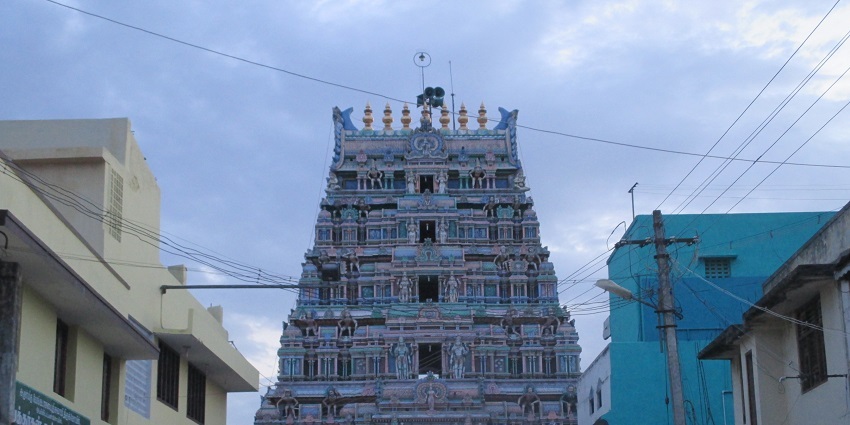
Photo: Ssriram mt / Wikimedia Commons
Best Time To Visit: The best time to visit is during the winter months, between October and February, since the weather remains pleasant with cool temperatures. In contrast, summer is not a good time as temperatures are mostly high in Tamil Nadu and become unbearable while going for temple tours.
Average Cost Of The Trip: Oppiliappan Temple is free of cost, but donations are most welcome. Any plans to visit other temples and villages around, do provide in your budget for transportation, food, and offerings. It’s always prudent to carry some extra money if you wish to take some prasadam from the temple or some local handicrafts.
Oppiliappan Temple, in its rich connotations of the spiritual element, the fabulous architectural set-up, and unique traditions, is a gold mine of religious experience to be savoured by devotees as well as tourists. Thousands of devotees huddle together during the festival, creating a holy atmosphere as they seek divine blessings and deep spiritual connection in this temple. Plan a visit to Tamil Nadu with TripXL to explore the whole temple, revelry, and worship all put together.
Cover Photo: VARAN NM / Pexels / Image For Representation Only


 WhatsApp
WhatsApp
 Twitter
Twitter









